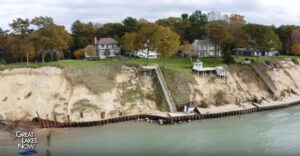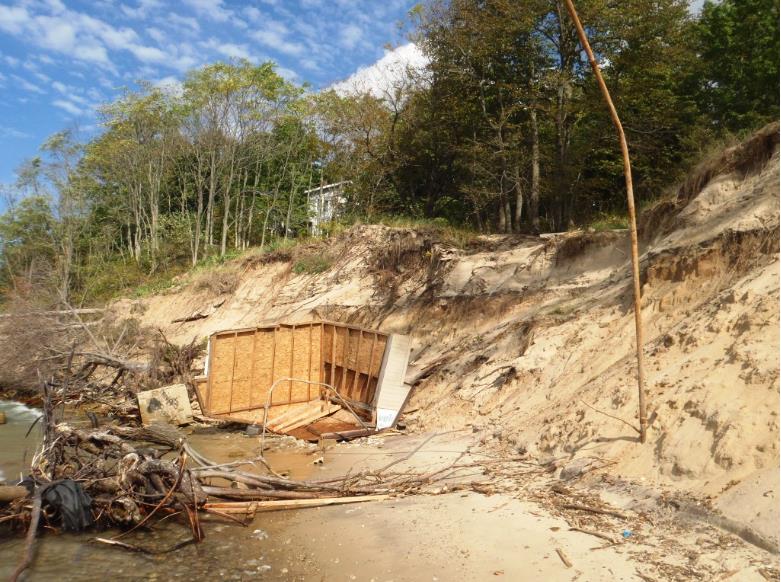The acute coastal erosion occurring along the Great Lakes is altering the landscape and threatening homes, infrastructure, and the economy.
But a new project, the Lake Michigan Coastal Resilience Initiative, is looking to change that, creating resilience via regenerative strategies.
The partnership effort, led by NOAA and the Great Lakes and St. Lawrence Cities Initiative, will help shoreline communities develop innovative, nature-based solutions that rebuild ecosystem health.

Photo courtesy of Great Lakes Now.
“Wetlands, dunes, parks, grassy swales, reefs—these natural features deflect wave energy and absorb excess water,” says Mayor Tom Barrett of Milwaukee, who also serves as vice chair of the Cities Initiative.
“We just need to get better at deploying nature-based solutions to combat erosion and other impacts from climate change. Through this initiative, we will work with municipal staff to move from project concept to design, and end up with shovel-ready projects that protect community assets and strengthen the resilience of our shorelines and communities,” he added.
Using existing analytics on coastal vulnerability, the first year of the effort will provide communities with the scientific expertise, training, and technical assistance needed to determine the best locations and approaches for nature-based projects.
The second year focus will be on prioritizing project ideas and designing high-value natural infrastructure projects.
About the Partners:
- The Great Lakes and St. Lawrence Cities Initiative represents 135 U.S. and Canadian mayors from across the binational Great Lakes-St. Lawrence region.
- NOAA’s Office for Coastal Management is the federal arm of this nation’s efforts to properly manage the nation’s coastal zone. For this project, NOAA will work side-by-side with local officials, offering data, technical assistance, training, and other subject matter expertise to assist with each phase of the project.
- The Great Lakes Restoration Initiative provided $500,000 for this effort.
Project examples from other regions of the country, which might be applicable here, include living shorelines, restored coastal dune and swale habitats, nearshore reefs, and floating islands to trap fast moving sediment.
Featured photo courtesy of the Michigan Department of Environment, Great Lakes and Energy.

